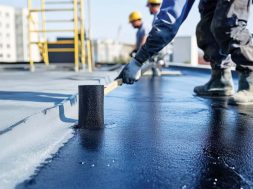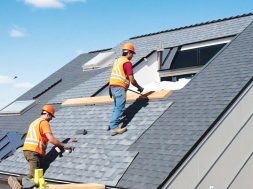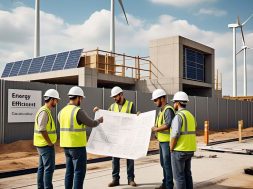Waterproofing experts call for site-specific, collaborative approach

While monsoon is a time to rejoice, it also comes with challenges! Although buildings are constructed factoring in several adversities, water ingress can potentially threaten built structures if not addressed adequately. Water leakage is a potential hazard and can cause significant damage to flooring, doors, windows, brickwork, and reinforcement bars. With concepts like sustainability and net-zero in construction gaining momentum, are we missing the basics of structural integrity? Is a process as vital as waterproofing being overlooked in modern-day construction? Let us see what experts have to offer.
Waterproofing is not an activity to be considered superficially. It requires an early bird and collaborative approach among the various stakeholders involved in building construction. Problems due to water leakage and seepage are not just at the surface or external level. Since water can travel even through microcracks, a building’s structural stability may be in question.
Best practices for efficient waterproofing
Ar. Rakesh Bhosale, Director, Bhosale and Bhosale Architects, defines the golden rules for effective waterproofing. Some important factors to be considered while assessing the waterproofing requirements of a building are site assessment, soil study, and water table assessment. The climatic conditions, including the amount of rainfall and wind direction, also are important aspects. Surfaces should then be prepared by properly cleaning and fixing all defects. Architects must choose waterproofing systems based on the area affected and not apply the same system to all components. For example, membranes or crystalline admixtures will work best for basements but may not work well for roofs or external walls.
Ar. Gaurav Sanghavi, Co-founder and principal Architect of Pentaspace Design Studio, also emphasises why waterproofing is not just a formality but should be deemed an integral part of the construction process, as it influences a structure’s energy efficiency and life.
Preventive waterproofing, the key to avoiding structural debilitation
Heavy rainfall is the time when maximum water ingress can happen. Ar. Rakesh highlights the need for preventive waterproofing to preserve buildings’ structural integrity, especially in high rises and commercial spaces. Key aspects of preventive waterproofing include using high-performance membranes on terraces and podiums; integral waterproofing for concrete; detailed sealing at joints and service entries; engineering drainage systems for capacity, with emergency overflows; and integrating smart building tech—like IoT-based moisture sensors and automated sump monitoring—to detect leaks or rising water levels in real-time.
Waterproofing chemicals, a boon to monsoon-prone regions
Today, various chemicals offer tailored solutions to addressing water ingress in monsoon-prone regions. Ar. Gaurav exemplifies this. They act as a barrier, intercepting water intrusion through surfaces, protecting walls, roofs, foundations, and other structural components from water damage, extending the life of structures and reducing the need for frequent renovation and maintenance. These are easy to apply, durable, and cost-effective as well. Commonly used chemicals include polymers, commonly used as roof coatings or membrane sheets and are extremely water-resistant and durable; cementitious coatings; liquid rubber waterproofing, which is flexible and thin, making it easy to apply; thermoplastic and PVC waterproofing membranes, which are UV-resistant and commonly used for roof waterproofing; and crystalline epoxy coatings, which prevents water ingress by forming a crystalline barrier within concrete.
Sharad Kathole, Director at Highbond Coatings, also exemplifies how polyurethane (PU) systems are emerging as the preferred choice because of their application versatility. Single—and double-component PU systems are good choices for new construction and can also be applied in building upgradation and repair. PU flooring products are exclusively tailored for commercial spaces’ floors, basements, and parking areas.
Nanotechnology, the new game-changer in waterproofing
Nanotechnology redefines waterproofing techniques through incredibly thin (nanoscale), durable, and water-impermeable coatings. Unlike traditional methods, these coatings penetrate deeply into materials, forming a strong barrier against water intrusion while allowing for breathability. Nanotech coatings are versatile and can be applied almost onto anything. They strengthen basement structures by preventing corrosion and water ingress. Compared to traditional methods, recently developed waterproofing techniques improve protection and resilience by utilising liquid-applied coatings, novel and flexible membranes, and intelligent leak detection systems. Because of their hydrophobic nature, nanocoatings chemically bond with surfaces, offering superior adhesion and long-term durability. Benefits include resistance to UV degradation, algae and fungus prevention, and self-cleaning surfaces. In addition, they are easier to apply, require less material, and preserve the aesthetics of architectural elements, making them ideal for glass, concrete, stone, and heritage surfaces. Nanotechnology offers a high-performance, low-maintenance, and sustainable waterproofing solution in modern and restoration projects.
Cookie Consent
We use cookies to personalize your experience. By continuing to visit this website you agree to our Terms & Conditions, Privacy Policy and Cookie Policy.










